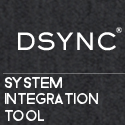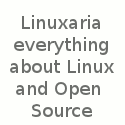MongoDB is a collection-oriented, schema-free and document based database. It is scalable, high-performance, open source and written in C++. A key feature from a developer’s perspective would be its powerful query language.
The official site has pretty good documentation, so we will just summarize the key concepts here.
Terminology:
Document – is a group of key-value pairs (similar to a hash in ruby), where keys are strings and values are any of a rich set of supported data types. You can think of it as a row in a relational
database, with keys being the column names. Document data is stored in BSON (“Binary Serialized document Notation”) format.
Example:
status = { posted_at: Date(“2012-06-19T02:10:11.3Z”),
author: “Mohammad”,
title: “Learning MongoDB basics”,
text: “This can be a very long description… “,
tags: [ “MongoDB”, “Rails” ],
likes: 20 }
BSON – is a binary-encoded serialization of JSON-like documents. BSON is designed to be lightweight, traversable, and efficient. BSON, like JSON, supports embedding of objects and arrays
within other objects and arrays.
Data Types – Mongo supports all basic JSON data types like string, integer, boolean, double, null, array, and object, as well as special data types like date, object_id, binary data, regular expression,
and code.
Collection – is a group of documents, usually having a similar structure. You can think of it as a table in a relational database.
Indexing – is similar to how it works in relational databases. Every document gets a default index on the “_id” attribute, which also acts as a primary key.
Embedding – is the nesting of objects and arrays inside a document like pre-joined data or like a ‘view’ in relational database. So, for example all the comments on a photo can be embedded
within the photo document itself instead of storing them in a different collection.
Example:
status = { posted_at: Date(“2012-06-19T02:10:11.3Z”),
author: “Mohammad”,
title: “Learning MongoDB basics”,
text: “This can be a very long description… “,
tags: [ “MongoDB”, “Rails” ],
likes: 20,
comments: [
{from “Chirag”,
commented_at: Date(“2012-06-19T02:50:11.3Z”),
comment “Yes, it is pretty cool!”}
]}
Links – are references between documents, like foreign keys.
Joins – are not supported in MongoDB. However, some data can be de-normalized and embedded within the parent document (like in the photo example above) to remove the need for joins.
Restrictions – Document element name cannot begin with “$” or contain a “” “_id” is reserved element name (primary key) and cannot be reused for any other purpose.
Syntax:
It would be good to try this out in a mongo console as we go.
Console
~$ mongo
> help // top level help
> db.help() // help on db-specific methods
> db.mycollection.help() // help on collection methods
Query
db.createCollection(“users”) // Create a new collection
db.users.find({}, {name:1,email:1}) // Get name and email of all users
db.users.find({age:33}, {name:1,email:1}) // Get name and email of all users older than 33 years
db.users.findOne({name: ‘mohammad’}) // Find first document with a given name
Insert
db.users.insert({name: ‘chirag’)
doc = {name: ‘mohammad’, email: ‘mohammad@rails.com’}
db.users.save(doc)
Update
db.users.update({name:’mohammad’}, {$set:{name:’Mohammad’}})
Delete & Drop
db.users.remove({name:’mohammad’})
db.users.drop()
For better understanding, you can go through SQL to Mongo reference here.
ORM for Rails:
There are several ActiveRecord replacements for MongoDB, but we have found MongoMapper to be the closest replacement. There is already a great Railscast on how to use MongoMapper with
Rails, so we won’t cover that in this article.
Get more information on: Ruby on Rails
For more information visit: Web Application Developer
Article Source: http://EzineArticles.com/?expert=Abhishek_Kr_Singh
Article Source: http://EzineArticles.com/7145839


Leave a Reply